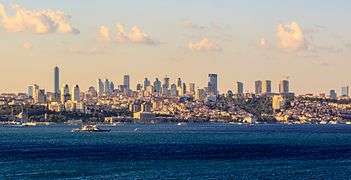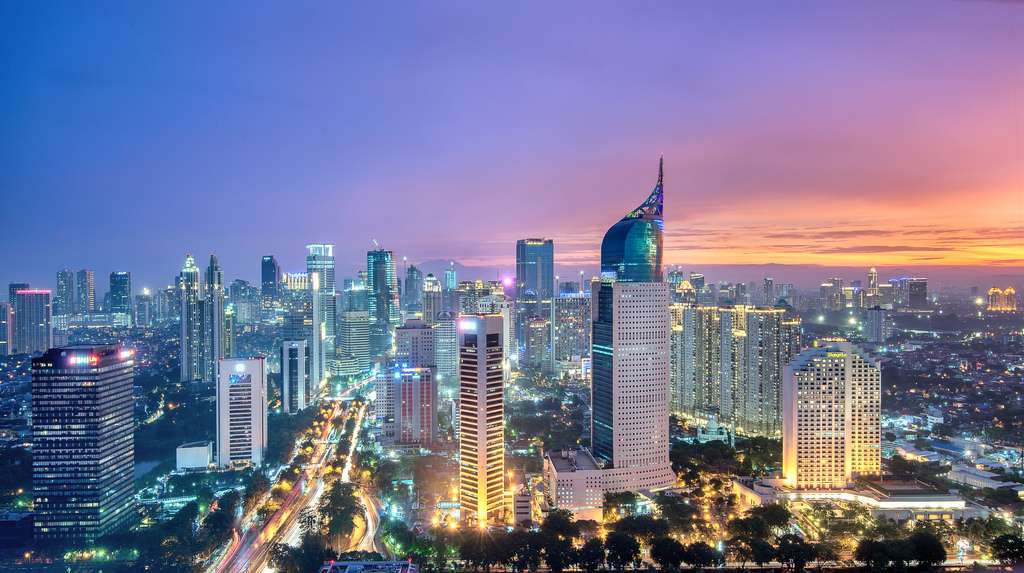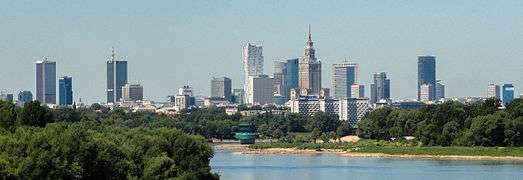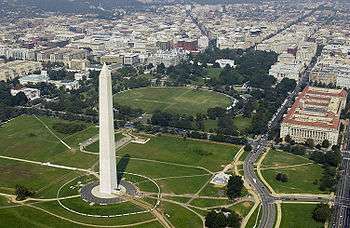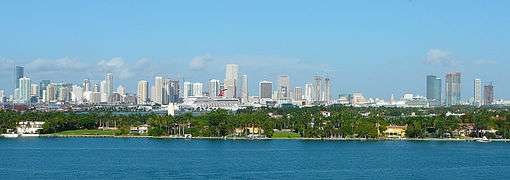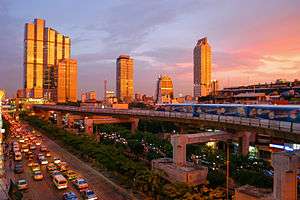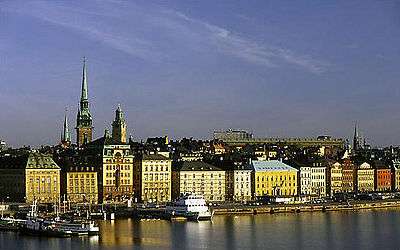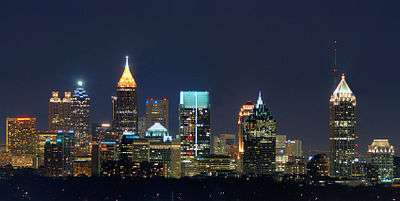Global city
A global city, also called world city or sometimes alpha city or world center, is a city generally considered to be an important node in the global economic system. The concept comes from geography and urban studies, and the idea that globalization can be understood as largely created, facilitated, and enacted in strategic geographic locales according to a hierarchy of importance to the operation of the global system of finance and trade.
The most complex of these entities is the "global city", whereby the linkages binding a city have a direct and tangible effect on global affairs through socio-economic means.[1] The use of "global city", as opposed to "megacity", was popularized by sociologist Saskia Sassen in her 1991 work, The Global City: New York, London, Tokyo;[2] although the term "world city", which refers to cities that control a disproportionate amount of global business, dates to at least the May 1886 description of Liverpool, by The Illustrated London News.[3] Patrick Geddes also used the term "world city" later in 1915.[4] More recently, the term has been described as being synonymous with a city's influence and 'financial capital', with other factors becoming less relevant.[5][6]
Criteria
Global city status is considered to be beneficial and desired, and because of this, many groups have tried to classify and rank which cities are seen as world cities or non-world cities.[4] Although there is a consensus upon leading world cities,[7] the criteria upon which a classification is made can affect which other cities are included.[4] The criteria for identification tend either to be based on a yardstick value (e.g., if the producer-service sector is the largest sector then city X is a world city)[4] or on an imminent determination (if the producer-service sector of city X is greater than the combined producer-service sectors of N other cities then city X is a world city.)[4]
Cities can also fall from such categorization, as in the case of cities that have become less cosmopolitan and less internationally renowned in the current era.
Characteristics
Although what constitutes a world city is still subject to debate, standard characteristics of world cities are:[8]
- A variety of international financial services,[9] notably in finance, insurance, real estate, banking, accountancy, and marketing
- Headquarters of several multinational corporations
- The existence of financial headquarters, a stock exchange, and major financial institutions
- Domination of the trade and economy of a large surrounding area
- Major manufacturing centres with port and container facilities
- Considerable decision-making power on a daily basis and at a global level
- Centres of new ideas and innovation in business, economics, culture, and politics
- Centres of media and communications for global networks
- Dominance of the national region with great international significance
- High percentage of residents employed in the services sector and information sector
- High-quality educational institutions, including renowned universities, international student attendance,[10] and research facilities
- Multi-functional infrastructure offering some of the best legal, medical, and entertainment facilities in the country
Variants
GaWC study
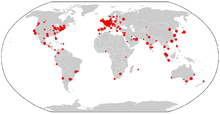
Together, Jon Beaverstock, Richard G. Smith and Peter J. Taylor established the Globalization and World Cities Research Network (GaWC). A roster of world cities was outlined in the GaWC Research Bulletin 5 and ranked cities based on their connectivity through four "advanced producer services": accountancy, advertising, banking/finance, and law.[7] The GaWC inventory identifies three levels of global cities and several sub-ranks.[11]
The 2004 rankings acknowledged several new indicators while continuing to rank city economics more heavily than political or cultural factors. The 2008 roster, similar to the 1998 version, is sorted into categories of "Alpha" world cities (with four sub-categories), "Beta" world cities (three sub-categories), "Gamma" world cities (three sub-categories) and additional cities with "High sufficiency" or "Sufficiency" presence. The following is a general guide to the rankings:[11]
- Alpha ++ cities are cities most integrated with the global economy. The two instances are London and New York City.
- Alpha + cities are advanced service niches for the global economy. Examples are Hong Kong, Sydney, Tokyo and Paris.[12]
- Alpha and Alpha− cities are cities that link major economic regions into the world economy. Examples of alpha cities are Los Angeles, Mumbai, and Moscow.[12]
- Beta level cities are cities that link moderate economic regions into the world economy. Examples of beta cities are Hyderabad, Rome, Luxembourg and Geneva.
- Gamma level cities are cities that link smaller economic regions into the world economy. Examples are Ankara and Marseilles.
- Sufficiency level cities are cities that have a sufficient degree of services so as not to be obviously dependent on world cities. Examples are Jerusalem and Harare.
Global Power City Index
The Institute for Urban Strategies at The Mori Memorial Foundation in Tokyo issued a comprehensive study of global cities in 2016. The ranking is based on six overall categories, "Economy", "Research & Development", "Cultural Interaction", "Livability", "Environment", and "Accessibility", with 70 individual indicators among them. This Japanese ranking also breaks down top ten world cities ranked in subjective categories such as "manager, researcher, artist, visitor and resident".[13]
Global Cities Index
In 2008, the American journal Foreign Policy, in conjunction with the Chicago-based consulting firm A.T. Kearney and the Chicago Council on Global Affairs, published a ranking of global cities, based on consultation with Saskia Sassen, Witold Rybczynski, and others.[14] Foreign Policy noted that "the world’s biggest, most interconnected cities help set global agendas, weather transnational dangers, and serve as the hubs of global integration. They are the engines of growth for their countries and the gateways to the resources of their regions."[15] The ranking was updated in 2010, 2012 and 2014.[16]
Global Economic Power Index
In 2015, the second Global Economic Power Index, a "survey of the surveys" compiled by Richard Florida, was published by The Atlantic (to be differentiated from a namesake list[17] published by the Martin Prosperity Institute), with cities ranked according to criteria reflecting their presence on 5 separate lists as published by 5 different entities.[17][18]
The Wealth Report
"The Wealth Report" (a global perspective on prime property and wealth) is made by the London-based estate agent Knight Frank LLP together with the Citi Private Bank. The report includes a "Global Cities Survey", evaluating which cities are considered the most important to the world’s HNWIs (high-net-worth individuals, having over $25 million of investable assets). For the Global Cities Survey, Citi Private Bank’s wealth advisors, and Knight Frank’s luxury property specialists were asked to name the cities that they felt were the most important to HNWIs, in regard to: "economic activity", "political power", "knowledge and influence" and "quality of life".[19][20]
Global City Competitiveness Index
In 2012, the Economist Intelligence Unit (The Economist Group), ranked the competitiveness of global cities according to their demonstrated ability to attract capital, businesses, talent and visitors.[21]
GaWC Gallery
Alpha++
Alpha+
Alpha
Alpha–
See also
- Ecumenopolis
- Financial centre
- List of cities by GDP
- Megalopolis (city type)
- Metropolis
- Primate city
- Ranally city rating system
References
- ↑ Sassen, Saskia - The global city: strategic site/new frontier
- ↑ Sassen, Saskia - The Global City: New York, London, Tokyo. (1991) - Princeton University Press. ISBN 0-691-07063-6
- ↑ "UK History". History.ac.uk. 18 December 2009. Retrieved 9 May 2012.
- 1 2 3 4 5 Doel, M. & Hubbard, P., (2002), "Taking World Cities Literally: Marketing the City in a Global Space of flows", City, vol. 6, no. 3, pp. 351-368. Subscription required
- ↑ "Asian Cities Pay Hidden Price for Global Status". The Diplomat. 15 February 2015.
- ↑ "The World's Most Influential Cities". Forbes. 14 August 2014.
- 1 2 GaWC Research Bulletin 5, GaWC, Loughborough University, 28 July 1999
- ↑ Pashley, Rosemary. "HSC Geography". Pascal Press, 2000, p.164
- ↑ J.V. Beaverstock, World City Networks 'From Below', GaWC, Loughborough University, 29 September 2010
- ↑ K. O'Connor, International Students and Global Cities, GaWC, Loughborough University, 17 February 2005
- 1 2 "The World According to GaWC". GaWC. Retrieved 21 November 2012.
- 1 2 "The World According to GaWC 2012". GaWC. Retrieved 5 February 2016.
- ↑ "Global Power City Index 2016". Tokyo, Japan: Institute for Urban Strategies at The Mori Memorial Foundation. October 2016.
- ↑ "2012 Global Cities Index and Emerging Cities Outlook" (PDF). Retrieved 9 May 2012.
- ↑ The main parameters are "Business activity" (30%), "Human capital" (30%), "Information exchange" (15%), "Cultural experience" (15%) and "Political engagement" (10%). "The 2008 Global Cities Index". Foreign Policy (November/December 2008). 21 October 2008. Retrieved 2008-10-31. Archived 7 January 2010 at the Wayback Machine.
- ↑ "2014 Global Cities Index and Emerging Cities Outlook" (PDF). Retrieved 16 August 2016.
- 1 2 Richard Florida (3 March 2015). "Sorry, London: New York Is the World's Most Economically Powerful City". The Atlantic Monthly Group. Retrieved 16 March 2015.
Our new ranking puts the Big Apple firmly on top.
- ↑ "The Top 10 most powerful cities in the world". Yahoo! India Finance. 11 May 2012. Retrieved 19 June 2013.
- ↑ "The Wealth Report 2015". Knight Frank LLP.
- ↑ "Global Cities Survey" (PDF).
- ↑ "Benchmarking global city competitiveness" (PDF). Economist Intelligence Unit. Economist Intelligence Unit.
External links
| Wikimedia Commons has media related to Global City. |
- Repository of Links Relating to Urban Places
- The World-System’s City System: A Research Agenda by Jeffrey Kentor and Michael Timberlake of the University of Utah and David Smith of University of California, Irvine
- UN-HABITAT.:. The State of the World’s Cities
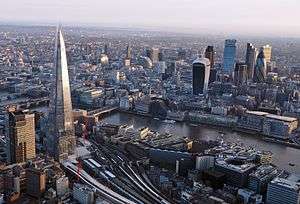
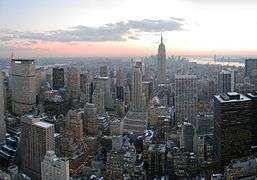

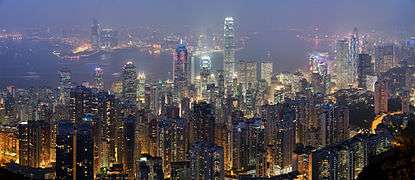
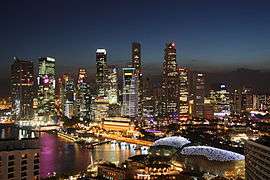



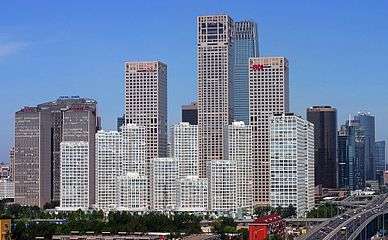

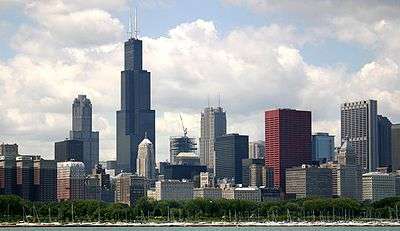
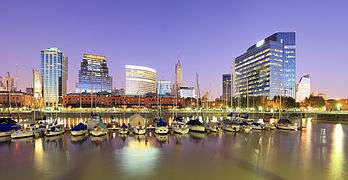

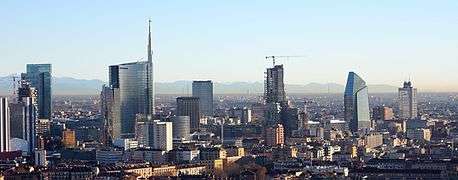
.jpg)
.jpg)
.jpg)
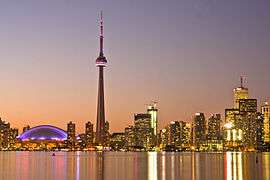
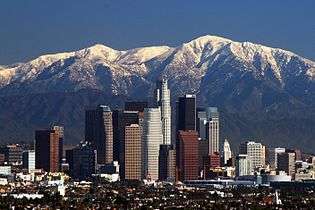
_04.jpg)


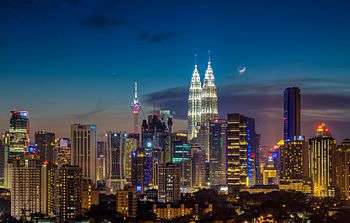
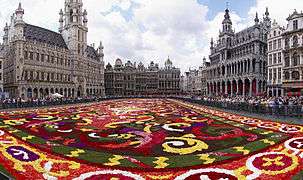
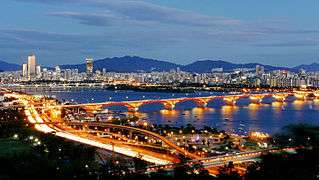
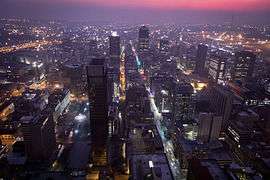
.jpg)
.jpg)
